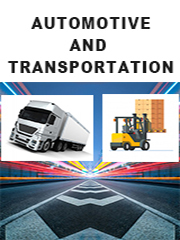Report overview
A Vehicle Restraint System (VRS) is Used to Absorb and Reduce the Forces of a Colliding Vehicle. It Does This by Deformation or Displacement, Reducing the Severity of the Accident by Effectively Limiting Damage to the Occupants of the Vehicle Involved. It Also Protects the Surrounding Environment, Including Buildings, Road Facilities, Trees and Embankments, from the Effects of Vehicle Instability. Its Design is Based on the Key Principle of Bringing Errant Vehicles Back into the Lane, Thereby Reducing Fatal Injuries, and the Resulting Design Vehicle Restraint Systems Contain a Variety of Equipment, Including Safety Barriers, Wire Rope Systems, Crash Cushions, Guardrails, Terminals, etc. Each Component of the Vehicle Restraint System Must Be Manufactured by the Supplier to National or International Standards and Must then Be Tested Using Recognized Test Methods, Verified by an External Accredited Body and Subject to Periodic Audits.
This report aims to provide a comprehensive presentation of the global market for Vehicle Restraint Systems (VRS), with both quantitative and qualitative analysis, to help readers develop business/growth strategies, assess the market competitive situation, analyze their position in the current marketplace, and make informed business decisions regarding Vehicle Restraint Systems (VRS). This report contains market size and forecasts of Vehicle Restraint Systems (VRS) in global, including the following market information:
Global Vehicle Restraint Systems (VRS) Market Revenue, 2018-2023, 2024-2030, ($ millions)
Global Vehicle Restraint Systems (VRS) Market Sales, 2018-2023, 2024-2030, (Units)
Global top five Vehicle Restraint Systems (VRS) companies in 2022 (%)
The global Vehicle Restraint Systems (VRS) market was valued at US$ million in 2022 and is projected to reach US$ million by 2029, at a CAGR of % during the forecast period. The influence of COVID-19 and the Russia-Ukraine War were considered while estimating market sizes.
The U.S. Market is Estimated at $ Million in 2022, While China is Forecast to Reach $ Million.
Temporary System Segment to Reach $ Million by 2029, with a % CAGR in next six years.
The global key manufacturers of Vehicle Restraint Systems (VRS) include HFBC, Arbus, Hill & Smith, Asset VRS, Saferoad, HBS, Hardstaff Barriers, Hatton VRS and Tata Steel, etc. in 2022, the global top five players have a share approximately % in terms of revenue.
We surveyed the Vehicle Restraint Systems (VRS) manufacturers, suppliers, distributors and industry experts on this industry, involving the sales, revenue, demand, price change, product type, recent development and plan, industry trends, drivers, challenges, obstacles, and potential risks.
Total Market by Segment:
Global Vehicle Restraint Systems (VRS) Market, by Type, 2018-2023, 2024-2030 ($ Millions) & (Units)
Global Vehicle Restraint Systems (VRS) Market Segment Percentages, by Type, 2022 (%)
Temporary System
Permanent System
Global Vehicle Restraint Systems (VRS) Market, by Application, 2018-2023, 2024-2030 ($ Millions) & (Units)
Global Vehicle Restraint Systems (VRS) Market Segment Percentages, by Application, 2022 (%)
Highway
Municipal Road
Global Vehicle Restraint Systems (VRS) Market, By Region and Country, 2018-2023, 2024-2030 ($ Millions) & (Units)
Global Vehicle Restraint Systems (VRS) Market Segment Percentages, By Region and Country, 2022 (%)
North America
US
Canada
Mexico
Europe
Germany
France
U.K.
Italy
Russia
Nordic Countries
Benelux
Rest of Europe
Asia
China
Japan
South Korea
Southeast Asia
India
Rest of Asia
South America
Brazil
Argentina
Rest of South America
Middle East & Africa
Turkey
Israel
Saudi Arabia
UAE
Rest of Middle East & Africa
Competitor Analysis
The report also provides analysis of leading market participants including:
Key companies Vehicle Restraint Systems (VRS) revenues in global market, 2018-2023 (Estimated), ($ millions)
Key companies Vehicle Restraint Systems (VRS) revenues share in global market, 2022 (%)
Key companies Vehicle Restraint Systems (VRS) sales in global market, 2018-2023 (Estimated), (Units)
Key companies Vehicle Restraint Systems (VRS) sales share in global market, 2022 (%)
Further, the report presents profiles of competitors in the market, key players include:
HFBC
Arbus
Hill & Smith
Asset VRS
Saferoad
HBS
Hardstaff Barriers
Hatton VRS
Tata Steel
OBEX
Outline of Major Chapters:
Chapter 1: Introduces the definition of Vehicle Restraint Systems (VRS), market overview.
Chapter 2: Global Vehicle Restraint Systems (VRS) market size in revenue and volume.
Chapter 3: Detailed analysis of Vehicle Restraint Systems (VRS) manufacturers competitive landscape, price, sales and revenue market share, latest development plan, merger, and acquisition information, etc.
Chapter 4: Provides the analysis of various market segments by type, covering the market size and development potential of each market segment, to help readers find the blue ocean market in different market segments.
Chapter 5: Provides the analysis of various market segments by application, covering the market size and development potential of each market segment, to help readers find the blue ocean market in different downstream markets.
Chapter 6: Sales of Vehicle Restraint Systems (VRS) in regional level and country level. It provides a quantitative analysis of the market size and development potential of each region and its main countries and introduces the market development, future development prospects, market space of each country in the world.
Chapter 7: Provides profiles of key players, introducing the basic situation of the main companies in the market in detail, including product sales, revenue, price, gross margin, product introduction, recent development, etc.
Chapter 8: Global Vehicle Restraint Systems (VRS) capacity by region & country.
Chapter 9: Introduces the market dynamics, latest developments of the market, the driving factors and restrictive factors of the market, the challenges and risks faced by manufacturers in the industry, and the analysis of relevant policies in the industry.
Chapter 10: Analysis of industrial chain, including the upstream and downstream of the industry.
Chapter 11: The main points and conclusions of the report.
